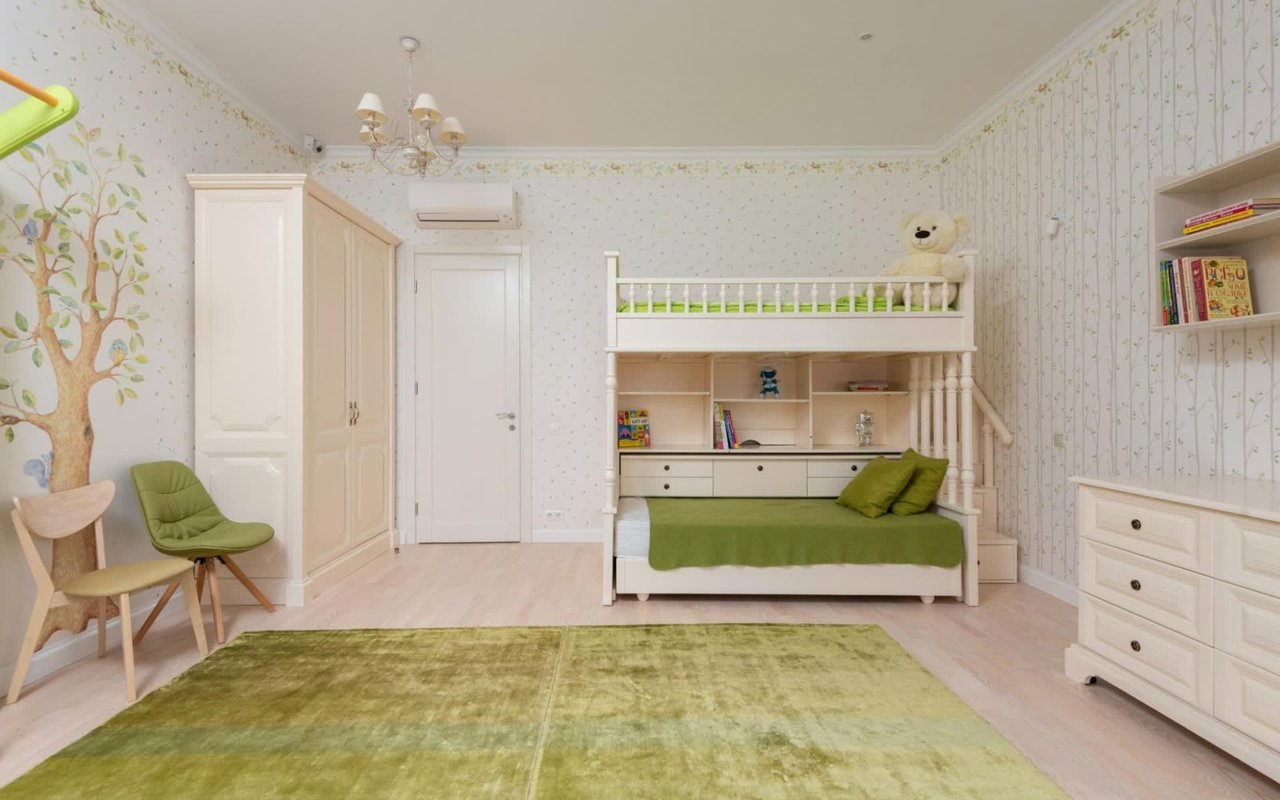Did you know that the average person spends 90% of their time indoors? Given this fact, it's no wonder that indoor air quality has become a significant concern for homeowners. The air we breathe inside our homes can be filled with pollutants, allergens, and harmful chemicals, impacting our health and well-being. Whether enjoying the comfort of your Austin, TX luxury home or preparing for a day outdoors, ensuring clean air inside your home is essential for maintaining a healthy living environment. From simple habits to strategic upgrades, there are numerous ways to enhance the air you breathe at home.
Fast facts about indoor air quality:
- The EPA ranks indoor air quality among its top five environmental health risks.
- Indoor air can contain certain pollutants up to five times higher than outdoor air.
- On average, Americans inhale around 3,000 gallons of air daily.
- The rate of pediatric asthma has increased by 72%.
Refreshing your air
One of the most effective ways to improve the air quality in your home is by regularly replacing your air conditioning filters and maintaining your air ducts. Air conditioning systems circulate cool air throughout your home, but they can also become a source of indoor pollutants if not properly maintained. Over time, dust, allergens, and other airborne particles accumulate in the filters and ducts, leading to poor air circulation and a buildup of contaminants in the air you breathe.
Replacing your air conditioning filters every one to three months is a simple task that can significantly impact indoor air quality. High-efficiency particulate air (HEPA) filters are particularly effective at trapping smaller particles, such as pollen and pet dander, ensuring that cleaner air circulates throughout your home. In addition, schedule regular professional inspections and cleaning of your air ducts. Clean air ducts maintain the efficiency of your HVAC system and prevent the spread of mold, bacteria, and other harmful substances that could otherwise be recirculated through your home.
Replacing your air conditioning filters every one to three months is a simple task that can significantly impact indoor air quality. High-efficiency particulate air (HEPA) filters are particularly effective at trapping smaller particles, such as pollen and pet dander, ensuring that cleaner air circulates throughout your home. In addition, schedule regular professional inspections and cleaning of your air ducts. Clean air ducts maintain the efficiency of your HVAC system and prevent the spread of mold, bacteria, and other harmful substances that could otherwise be recirculated through your home.
Balancing the air
Humidity plays a significant role in the comfort and health of your indoor environment. When humidity levels are too high, it creates the perfect breeding ground for mold, mildew, and dust mites, which can negatively impact your respiratory health. On the other hand, air that is too dry can irritate the skin, throat, and respiratory tract.
To manage humidity levels effectively, keep indoor humidity between 30% and 50%. You can achieve this balance by using a dehumidifier during the humid summer months and a humidifier when the air becomes too dry in the winter. Additionally, ensuring proper ventilation in areas prone to moisture, such as bathrooms and kitchens, prevents the buildup of excess humidity. Exhaust fans, especially those that vent outside, are particularly effective in these areas.
To manage humidity levels effectively, keep indoor humidity between 30% and 50%. You can achieve this balance by using a dehumidifier during the humid summer months and a humidifier when the air becomes too dry in the winter. Additionally, ensuring proper ventilation in areas prone to moisture, such as bathrooms and kitchens, prevents the buildup of excess humidity. Exhaust fans, especially those that vent outside, are particularly effective in these areas.
Clearing the air
Cooking is a daily activity in most homes, but it can also be a significant source of indoor air pollution if not properly managed. Cooking, especially frying and grilling, releases smoke, grease, and other particulates into the air, which can linger and degrade the air quality inside your home. A proper cooking ventilation system is one of the most effective ways to combat these pollutants.
A well-maintained range hood is an essential component of any kitchen. It captures and filters out cooking fumes, grease, and moisture before they can spread throughout your home. For the best results, opt for a vented range hood that exhausts air to the outside, as it is far more effective at removing contaminants than recirculating hoods. Make sure to run the range hood every time you cook, especially when using high-heat methods that produce more smoke and odors.
Consider installing additional ventilation, such as a kitchen exhaust fan, to help expel airborne pollutants more effectively. Regular cleaning of your ventilation filters and ensuring that the system is functioning properly will further enhance its ability to improve air quality.
A well-maintained range hood is an essential component of any kitchen. It captures and filters out cooking fumes, grease, and moisture before they can spread throughout your home. For the best results, opt for a vented range hood that exhausts air to the outside, as it is far more effective at removing contaminants than recirculating hoods. Make sure to run the range hood every time you cook, especially when using high-heat methods that produce more smoke and odors.
Consider installing additional ventilation, such as a kitchen exhaust fan, to help expel airborne pollutants more effectively. Regular cleaning of your ventilation filters and ensuring that the system is functioning properly will further enhance its ability to improve air quality.
Breathing easy
Managing allergens maintains a healthy indoor environment, especially if you or your family suffer from allergies. Homes can harbor various allergens, including dust mites, pet dander, pollen, and mold spores. These airborne particles can trigger allergic reactions and exacerbate respiratory issues.
One of the most effective ways to manage allergens is through regular cleaning. Vacuuming carpets, rugs, and upholstered furniture with a HEPA filter vacuum can significantly reduce dust and pet dander. Washing bedding, curtains, and other fabrics frequently in hot water will eliminate dust mites. For pet owners, regular grooming and bathing can help minimize the amount of dander they shed into the environment. Air purifiers equipped with HEPA filters can capture airborne allergens, providing cleaner air to breathe.
One of the most effective ways to manage allergens is through regular cleaning. Vacuuming carpets, rugs, and upholstered furniture with a HEPA filter vacuum can significantly reduce dust and pet dander. Washing bedding, curtains, and other fabrics frequently in hot water will eliminate dust mites. For pet owners, regular grooming and bathing can help minimize the amount of dander they shed into the environment. Air purifiers equipped with HEPA filters can capture airborne allergens, providing cleaner air to breathe.
How to conduct air quality assessments
Regularly assessing the air quality in your home maintains a healthy living environment. While you can take proactive steps like replacing filters, managing humidity, and using proper ventilation, conducting an air quality assessment provides a more comprehensive understanding of what's in the air you breathe. The assessment helps identify any hidden pollutants, allergens, or issues that might not be immediately obvious.
You can start with a simple at-home air quality monitor, which tracks various pollutants, including volatile organic compounds (VOCs), carbon dioxide, and particulate matter. These monitors provide real-time data, giving you an overview of your home's air quality and alerting you to potential issues. If your monitor indicates higher levels of pollutants, it might be time to take further action.
For a more thorough assessment, consider hiring a professional air quality service. These experts use advanced tools to measure the concentration of various pollutants and identify specific sources of contamination, such as mold, radon, or chemical off-gassing. A professional assessment can also include recommendations for improving air quality and addressing detected issues.
You can start with a simple at-home air quality monitor, which tracks various pollutants, including volatile organic compounds (VOCs), carbon dioxide, and particulate matter. These monitors provide real-time data, giving you an overview of your home's air quality and alerting you to potential issues. If your monitor indicates higher levels of pollutants, it might be time to take further action.
For a more thorough assessment, consider hiring a professional air quality service. These experts use advanced tools to measure the concentration of various pollutants and identify specific sources of contamination, such as mold, radon, or chemical off-gassing. A professional assessment can also include recommendations for improving air quality and addressing detected issues.
Common questions about home air quality
How often should air filters be replaced?
To maintain good indoor air quality, it's recommended that air filters be replaced every one to three months. The frequency depends on factors like the presence of pets, the size of your home, and the type of filter you use. Regular replacement ensures that your HVAC system operates efficiently and that pollutants are effectively removed from the air.
How can I determine if my air ducts need cleaning?
If you notice visible mold growth inside your ducts, a significant buildup of dust and debris, or if your home has recently undergone major renovations, it may be time to have your air ducts cleaned. Additionally, if you're experiencing unexplained respiratory issues or allergy flare-ups, dirty ducts could be the culprit and a professional inspection is advised.
Is testing indoor air quality necessary?
Testing indoor air quality can be essential, especially if you suspect hidden pollutants like mold, radon, or chemical fumes. Regular testing is a proactive way to identify potential hazards that might not be immediately visible, allowing you to take steps to mitigate them and ensure a healthy living environment in your home.
Your real estate partner
From improving air quality to making strategic home improvements, a real estate agent can guide you in making the right decisions to increase your home's marketability and ensure a positive return on investment when selling your home in Austin, TX.
Ivy Residential Group is deeply attuned to the beauty of well-designed homes and the people who create and live in them. They are happy to help homeowners decide on the best home improvements to maximize their property's value. With their expertise, you can feel confident that your home is in capable hands, whether preparing to sell or simply looking to make your living space more comfortable and inviting.
Ivy Residential Group is deeply attuned to the beauty of well-designed homes and the people who create and live in them. They are happy to help homeowners decide on the best home improvements to maximize their property's value. With their expertise, you can feel confident that your home is in capable hands, whether preparing to sell or simply looking to make your living space more comfortable and inviting.




